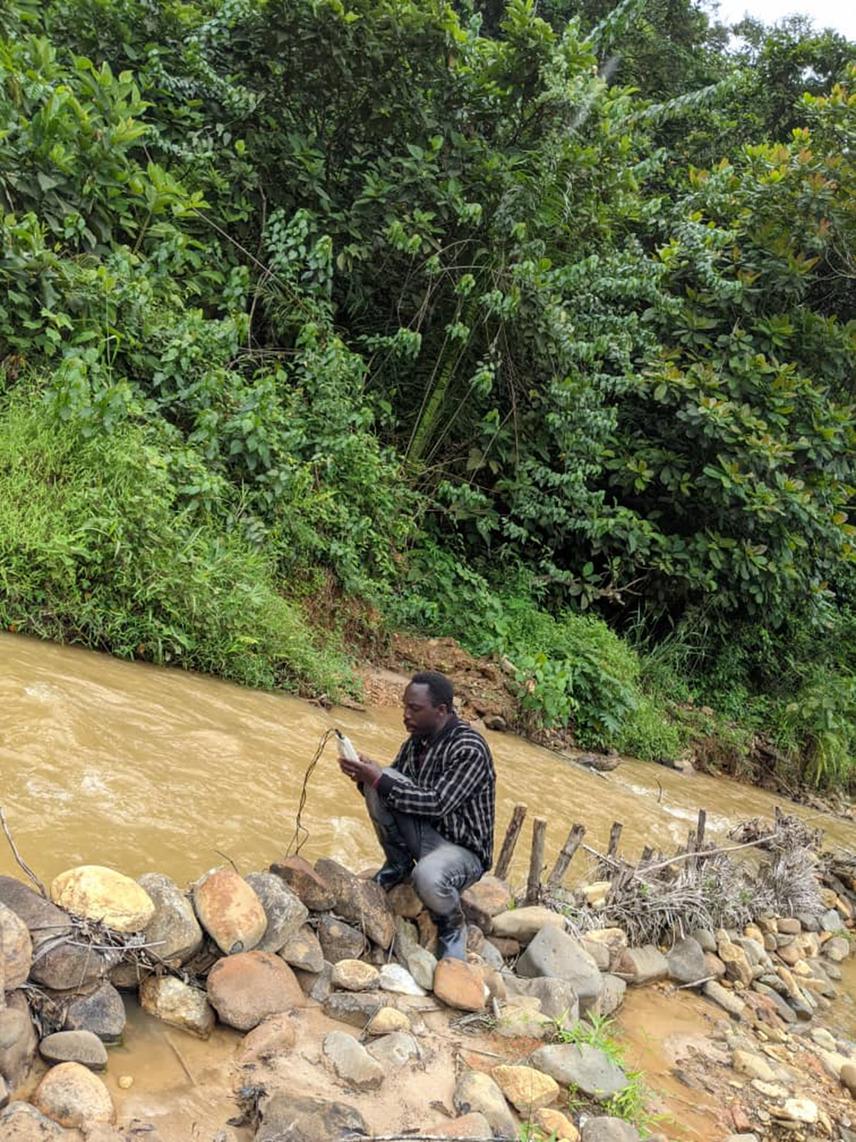Article featuring the project.
Dieudonne Shukuru Wasso
Other projects
23 Dec 2024
Applied Community-Based Approach and ICT Tool for Kahuzi Biega National Park Elephant Preservation
In South Kivu province, Eastern DR Congo, artisanal miners use mercury (Hg) to separate minerals especially gold from the rest of the ore. Nevertheless, the harmful effects of Hg have been clearly established. Humans are exposed to mercury through inhalation of its vapor and from consumption of contaminated fish and crabs. Freshwater fish and crabs are also affected by methylmercury via adverse effects on their gills, liver, and reproduction.

Collection of water parameters in Lubyala River.
As mining activities expand in DR Congo, especially in South Kivu province, impacts on fish habitats and their biodiversity will become increasingly prominent. Additionally, since waterbodies polluted by these ores and heavy metals are connected to lakes, this may result in a global impact on aquatic biodiversity and human health. However, no research project has so far examined the effects of these mining activities on the fish and crabs’ habitats and biodiversity, production level and survival of farmers/fishers whose lives depend on the revenue from the fishing/farming activities. In addition, no attempt has been done to empower farmers and fisher’s communities as well as other stakeholders to manage the fish and crab’s habitats and biodiversity in the area.
Therefore, this project intends to highlight the impact of mining activities on freshwater fish and crabs’ biodiversity and formulate community-based preservation strategies by involving the relevant stakeholders (including the fishers/farmer’s communities) in South Kivu province, DR Congo. Specifically, the study intends to inventory the freshwater fish and crab species available, to assess the effect of mining activities on their biodiversity, to determine the population perception about the effect of mining activities on the fish and crab’s yield and biodiversity as well as on the revenue of farmers/fishers, to develop and vulgarize community based strategies that will enable the protection of the fish and crabs’ biodiversity and finally to empower stakeholders including fishers, farmers, mining operators, environmentalists, government representatives and local communities who will be applying the defined community based strategies for the protection of fish and crab biodiversity against mining activity threats.
Header: Diversity of crabs collected.